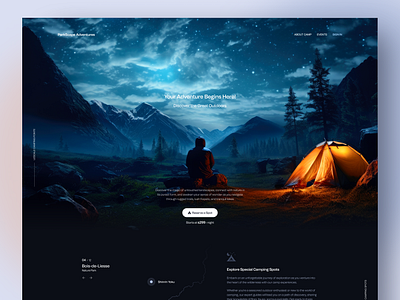Why Web Design and User Experience Must Go Hand-in-Hand for Success
Why Internet Layout Is Crucial for Structure Trust and Engaging Consumers
In today's digital landscape, the relevance of internet style prolongs much beyond appearances; it is a vital aspect in developing depend on and promoting consumer involvement. A well-crafted internet site not just forms very first perceptions however likewise influences individual experience, which can figure out the durability of client relationships.
The Impact of First Impressions
The minute a site visitor arrive on a site, they quickly develop an impression that can either engage them or drive them away. This instantaneous evaluation, frequently based upon visual components, format, and general aesthetics, plays an important function in determining whether users will certainly explore further or exit immediately. Research indicates that individuals often make judgments about an internet site's reputation within plain secs, emphasizing the demand for a sleek and expert layout.
A well-structured web site that mirrors brand name values fosters trust and encourages users to dig much deeper into the material. Secret components such as color plans, typography, and images must line up cohesively to develop an aesthetically enticing experience. On the other hand, a cluttered or obsolete style can evoke hesitation, leading prospective consumers to doubt the brand's dependability.
Additionally, the very first impression extends past mere visuals; it includes navigating convenience and performance. A website that is user-friendly and straightforward ensures visitors really feel comfortable exploring its features. Ultimately, the impact of initial impacts can not be overemphasized; they lay the foundation for individual interaction and long-lasting connections. Buying effective website design is, therefore, an important technique for building trust fund and welcoming customers to interact with the brand.

Significance of Customer Experience
A favorable initial impression sets the stage for a much deeper link between the user and the site, making individual experience (UX) a crucial component of website design. UX includes all aspects of the end-user's communication with the website, affecting their contentment and interaction levels. A properly designed UX makes sure that individuals can navigate the website without effort, discover info swiftly, and full desired activities easily.
Secret elements of effective UX include responsive style, which enables seamless access on different tools, and clear navigating that reduces cognitive lots. When customers come across rubbing, such as slow loading times or made complex formats, they are most likely to abandon the website, causing possible lost sales and decreased count on.
Moreover, a favorable UX cultivates psychological connections, urging users to return and recommend the website to others. In today's competitive landscape, investing in individual experience is not just advantageous; it is crucial for lasting development and success.
Building Brand Integrity
Establishing brand name trustworthiness is vital for promoting trust fund among individuals and guaranteeing long-term engagement with a web site. A well-designed site acts as the foundation upon which credibility is developed. Secret elements such as professional aesthetics, user-friendly navigating, and mobile responsiveness show a brand's commitment to high quality and user contentment.
Moreover, including aspects like customer testimonials, study, and sector certifications can considerably improve viewed reliability. These components provide tangible evidence of a brand's integrity and knowledge, strengthening customers' self-confidence in their options.
Constant branding throughout all digital touchpoints also plays an essential role. Well-known logo designs, uniform color design, and cohesive messaging create a sense of experience and reliability. When customers see a regular brand existence, they are a lot more likely to perceive the brand name as authoritative and reliable.
Furthermore, security attributes such as SSL certifications and transparent privacy policies reassure customers that their data is secure, additional solidifying trust fund. By prioritizing these aspects in internet design, organizations can successfully build brand name trustworthiness, creating a strong foundation for client loyalty and long-lasting success in an increasingly digital marketplace.
Enhancing Consumer Engagement
Involving customers successfully requires a calculated method that exceeds simple appearances. Web design. A well-designed internet site utilizes aesthetic elements, material, and capability to create an immersive experience that catches visitors' focus and encourages interaction. Trick components include user-friendly navigating, engaging calls-to-action, and strategically put web content that resonates with the target audience
Interactive attributes, such as surveys, quizzes, and comment sections, promote a feeling of area and encourage individuals to take part proactively. This involvement not only enhances individual experience however additionally provides important insights into next page client choices and habits. In addition, incorporating multimedia aspects like video clips and infographics can share details more dynamically, keeping individuals involved much longer.
Moreover, personalization plays an important function in improving client interaction. Customizing material based on customer actions and choices makes site visitors feel valued and comprehended, enhancing the probability of return brows through and conversions.
Inevitably, an internet site made with interaction in mind goes beyond simple performance; it ends up being a platform for building partnerships. By focusing on individual experience with thoughtful design and interactive aspects, organizations can grow much deeper connections with their audience, cultivating commitment and encouraging ongoing involvement.
Mobile Responsiveness and Access

In enhancement to responsiveness, availability is similarly vital. Creating with ease of access in mind makes sure that all individuals, including those with handicaps, can communicate with the website properly. This can include including alternate text for pictures, ensuring adequate color comparison, and making it possible for keyboard navigating. Ease of access not just expands the target market but additionally aligns with moral duties and legal criteria.
Moreover, internet search engine prioritize mobile-responsive and easily accessible websites in their rankings. This implies that spending in these facets not just enhances individual involvement yet also improves visibility in search results page. To conclude, mobile responsiveness and access are essential in website design, directly affecting individual trust fund and total customer engagement.
Conclusion
Finally, effective website design plays a critical role in establishing count on and fostering customer engagement. By creating a easy to use and visually appealing user interface, businesses can boost impressions and boost general individual experience. The combination of responsive design further makes certain access throughout different devices, accommodating a bigger target market. Inevitably, a well-structured web site not only enhances brand name trustworthiness but also grows enduring customer relationships, making website design a necessary component of successful electronic method.
A well-crafted internet site not only shapes first perceptions yet likewise influences customer experience, which can figure out the long life of consumer partnerships. Research indicates that users typically make judgments regarding a web site's reputation within plain secs, emphasizing the need for a polished and professional layout.
Spending in efficient internet design is, for that reason, a crucial technique for building count on and welcoming customers to interact with the brand.
